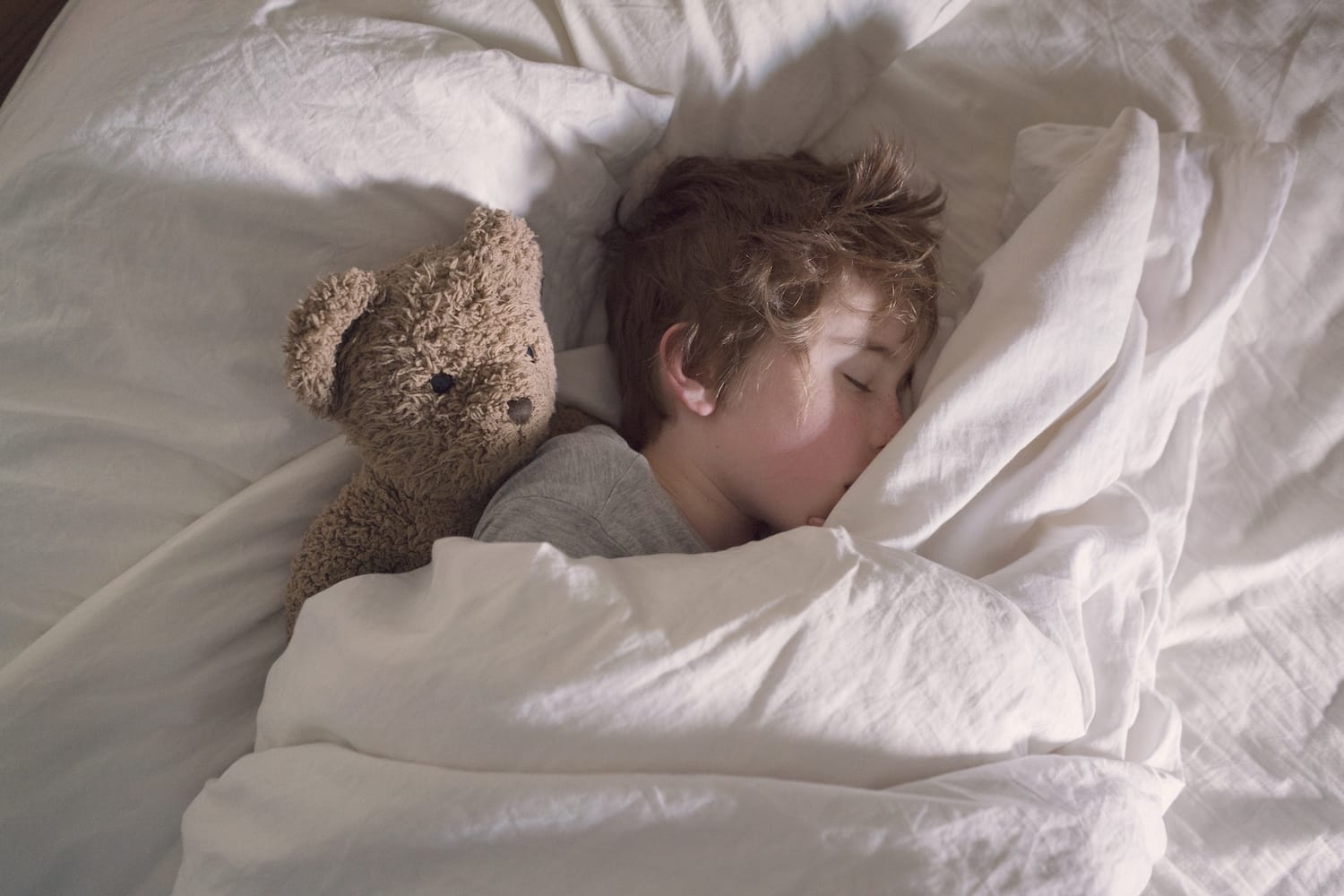How to ease into back-to-school sleep routines—a sleep expert breaks it down for us

Start the school year with well-rested kids.
Table of Contents
For a lot of families, summer is a season where rules relax and bedtimes get pushed back a little later than usual. But with school starting, weekday mornings are about to start a lot earlier for many kids, and parents might be wondering how to reset the clock on bedtimes.
According to Terry Cralle, an RN, certified clinical sleep expert and the spokesperson for the Better Sleep Council, a new school year is a good opportunity for families to get a fresh start on sleep routines.
“We have to start with really making sufficient sleep a family priority [and] having some discussions about the importance of sleep with our children,” Cralle tells Motherly. “It shouldn’t be at bedtime when everyone’s cranky and tired. It should be during the day that families really discuss the importance of sleep for all family members.”
If you need to have a conversation about getting enough sleep for school, try the following tips from Cralle.
1. Be positive about sleep
Make sure that younger children, especially, understand that sleep is a positive, not negative thing, and don’t use the threat of bedtime as punishment.
“What we want to do is, ideally, change how children perceive sleep because children can see sleep as a great big timeout where they’re missing out on things,” Cralle explains, suggesting that parents instead try to present sleep and bedtime routines as “with positivity and as just a non-negotiable part of our lives.”
Cralle wants parents to make sure they’re talking with their kids about how a lack of sleep can impact one’s mood, health and academic ability. Just as we teach our kids about the importance of eating healthy, we should be teaching them about the importance of sleeping healthy, and from an early age.
2. Empower your children with choices
According to Cralle, it’s really important to empower children with choices around bedtime, because the one thing they can’t have a choice in is the fact that they do need to go to sleep.
“They’re going be more accountable, more responsible, and hopefully, develop good sleep habits and practice good hygiene early in life,” if we empower them through simple choices, Cralle suggests.
“So we can say, what pajamas do you want to wear to bed tonight? What book do you want to read? Let them participate. If they can pick out their color of their pillowcase, let them do it. Whatever’s age appropriate.”
3. Let them do their own bedtime math
Instead of just telling kids when they need to go to bed, involve them in figuring out an appropriate bedtime.
The American Academy of Sleep Medicine lists how much sleep kids need depending on their age. Have them look up how much sleep a kid their age needs, and then show them the National Sleep Foundation’s online bedtime calculator. Kids can choose how many hours of sleep they need and when they want to wake up, and it will show them when they need to go to bed.
It’s not an arbitrary decision mom and dad made, it’s science and math, and you can’t argue with that.
4. Add one sleep item to the back-to-school shopping list
Cralle says adding one sleep-related item to the back to school shopping list can really help children understand the importance of sleep as they head back into the classroom. A conversation about how getting a good night’s sleep is important for school success, combined with a shopping trip for a new pillowcase or comforter can really help children see sleep as an important priority, and give them something to look forward to using at bedtime.
5. Provide an environment conducive to sleep
When our kids are infants we’re really good at setting up rooms that can help them sleep. But as our children age out of cribs and start to accumulate a lot of possessions and playthings, their rooms can become a less ideal sleeping environment.
According to Cralle, it’s not uncommon for kids to get up after bedtime and start playing with toys in their room. She recommends removing stimulating toys or storing them in another area of the home, and never putting televisions, tablets or smartphones in a child’s room.
6. Enact a media curfew
At least an hour before bedtime, screen time should come to an end and other, more relaxing activities can begin. Cralle says families can designate a certain hour as DEAR (Drop Everything and Read) time , or move from away from brightly lit screens and towards a board games or puzzles, “things to do to get that blue light out of their eyes.”
A family-wide media curfew can be a good thing, says Cralle, as it helps parents “walk the walk” when it comes to sleep hygiene. “Don’t be looking at your iPad and tell your child to put it away,” she explains.
7. Remember: It’s never too late for good sleep habits.
https://www.instagram.com/p/Bz0pkkWjeKL/?utm_source=ig_web_copy_link
According to Cralle, age 3 is the ideal time to start reinforcing the importance of sleep for a child’s health, but older kids and even mom and dad can reverse bad bedtime habits if the whole family buys in. That may mean curtailing your kids’ (and your own) caffeine consumption, says Cralle.
“We’re seeing younger and younger age groups of school children walking around with their Starbucks cups, with coffee, late in the afternoon,” says Cralle, who thinks a lot of parents just don’t have good information on how caffeine consumption can impact sleep—for our kids and ourselves.
She recommends limiting the number of caffeinated beverages available in the house if you’ve got tweens and teens at home, and watching your own consumption as well.
“We have to say ‘Here’s how we’re all going to approach it.’ It’s sort of like seat belts with children, we never would buckle them in and get into the car, and not do it ourselves.”
This may be the season to tweak your own sleep habits mama. Here’s to a well-rested September.
[Correction: August 24, 2018: The sleep calculator was created by the National Sleep Foundation, not the Better Sleep Council.]
[A version of this post was originally published August 23, 2018. It has been updated.]


































